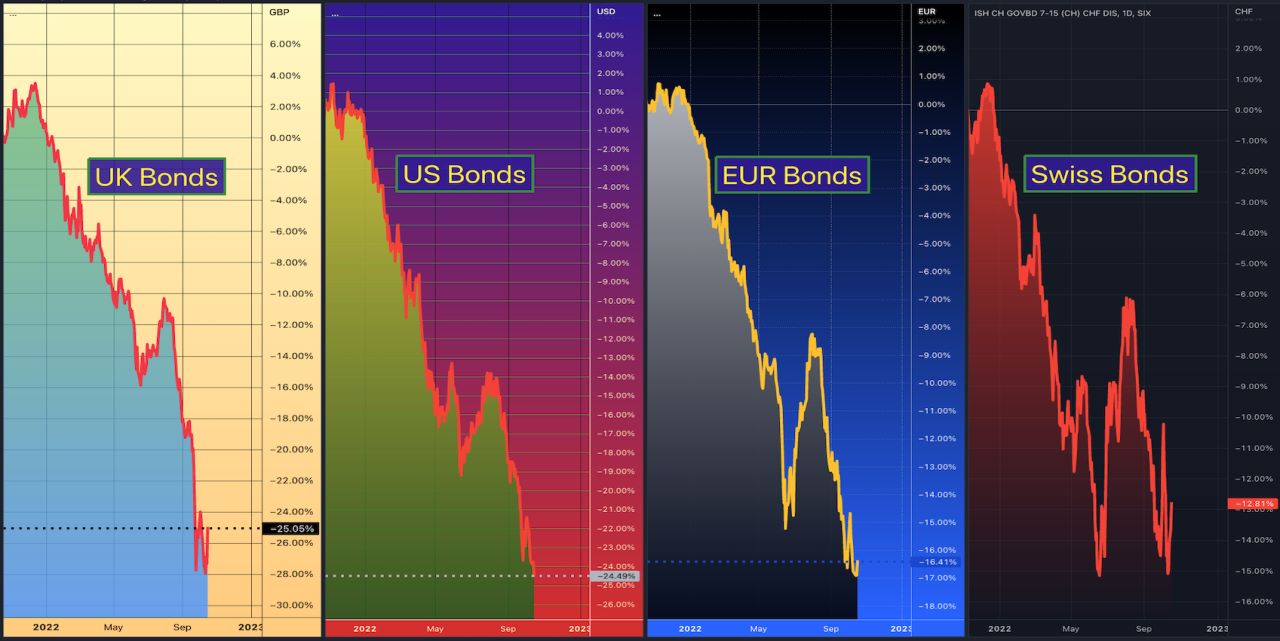Home>Finance>What Kind Of Tax System Does The Average Tax Rate Rises With GDP?


Finance
What Kind Of Tax System Does The Average Tax Rate Rises With GDP?
Published: October 29, 2023
Learn how the average tax rate varies with GDP in the finance sector. Understand the impact of economic growth on taxes and plan your finances accordingly.
(Many of the links in this article redirect to a specific reviewed product. Your purchase of these products through affiliate links helps to generate commission for LiveWell, at no extra cost. Learn more)
Table of Contents
Introduction
Taxes play an essential role in the functioning of a country’s economy, funding public services and infrastructure. The average tax rate is a key indicator of how much individuals and businesses are contributing to the tax system. It is calculated by dividing the total amount of tax paid by the total income or GDP.
Understanding the relationship between the average tax rate and GDP is crucial for policymakers and experts alike. While tax systems can vary significantly from country to country, one common trend that emerges is the rise in the average tax rate as GDP increases.
In this article, we will explore the relationship between the average tax rate and GDP, the factors that influence the average tax rate, and the different types of tax systems in place around the world. We will also examine how the average tax rate changes in different tax systems as GDP grows.
By gaining a deeper understanding of the dynamics between the average tax rate and GDP, we can shed light on the fairness, effectiveness, and sustainability of tax systems. This knowledge can help inform policymakers in making informed decisions about tax policies and provide individuals and businesses with valuable insights into their tax liabilities.
So, let’s delve into the intricacies of the average tax rate and its connection to GDP, and explore the diverse tax systems employed globally to see how average tax rates fluctuate in different economic contexts.
Understanding Average Tax Rate
The average tax rate is a measure of the overall percentage of income or GDP that individuals or businesses contribute in taxes. It is calculated by dividing the total tax paid by the total income or GDP.
The average tax rate provides an overview of the burden imposed by the tax system on taxpayers. It helps determine the fairness and progressivity of the tax system. A progressive tax system typically has higher average tax rates for higher-income individuals, while a regressive tax system may have a higher tax burden for lower-income individuals.
It’s important to note that the average tax rate is different from the marginal tax rate. The marginal tax rate is the tax rate applied to the last dollar earned or the next dollar to be earned. On the other hand, the average tax rate represents the overall tax rate for the entire income or GDP.
For example, if an individual has an average tax rate of 20%, it means that they contribute 20% of their total income in taxes. However, their marginal tax rate may vary depending on their income bracket and the tax brackets in the system.
The average tax rate is a useful tool for policymakers to assess the impact of tax policies on different income groups and the overall economy. It can also provide insights into the progressivity of the tax system and whether it is effectively redistributing wealth.
Understanding the average tax rate is crucial for individuals and businesses as well. It helps them plan their finances and estimate their tax liabilities. By knowing their average tax rate, they can make informed decisions regarding savings, investments, and spending patterns.
In summary, the average tax rate is a key indicator of the overall tax burden on individuals and businesses. It provides insights into the fairness and effectiveness of the tax system. By understanding the average tax rate, both policymakers and taxpayers can make informed decisions and contribute to a well-functioning economy.
Relationship Between Average Tax Rate and GDP
The relationship between the average tax rate and GDP is an important aspect of understanding a country’s tax system and its impact on the economy. Generally, as GDP increases, the average tax rate tends to rise as well.
This relationship is attributed to the progressive nature of many tax systems. Progressive tax systems impose higher tax rates on higher-income individuals or businesses. As the economy grows and GDP increases, the income levels of individuals and businesses also tend to rise. Consequently, their tax liabilities increase, leading to a higher average tax rate.
The progressive nature of tax systems aims to achieve income redistribution and promote social equity. By taxing higher-income individuals at a higher rate, the tax system seeks to reduce income inequality. As the economy grows, the tax system generates more revenue from high-income earners, allowing for greater provision of public services and benefits.
However, it is important to note that the relationship between the average tax rate and GDP can vary depending on different factors such as tax policies, exemptions, and loopholes. In some cases, tax reforms or changes in tax brackets might be implemented, affecting the average tax rate differently.
Moreover, there may be instances where the average tax rate remains relatively stable or even decreases despite GDP growth. This can occur if tax reforms or changes in the tax system lead to reduced tax rates or increased exemptions, resulting in a lower tax burden on taxpayers.
The relationship between the average tax rate and GDP is not solely determined by tax policies. Macroeconomic factors, such as inflation, employment rates, and overall economic growth, also play a role. These factors influence the level of income generating activity in the economy, which in turn affects the overall tax revenue and average tax rate.
In summary, the relationship between the average tax rate and GDP is generally positive. As the economy grows and GDP increases, the average tax rate tends to rise as well. This relationship is influenced by the progressive nature of many tax systems. However, other factors such as tax reforms and macroeconomic conditions can also impact the relationship between the average tax rate and GDP. Understanding this relationship provides valuable insights into the functioning and impact of tax systems on the broader economy.
Factors Influencing Average Tax Rate
Several factors contribute to the determination of the average tax rate in a given tax system. Understanding these factors is crucial for policymakers, individuals, and businesses to grasp the nuances of tax liabilities and the overall fairness of the tax system. Here are some key factors that influence the average tax rate:
1. Tax brackets: Tax brackets define the income ranges at which different tax rates apply. The structure and number of tax brackets in a system greatly impact the average tax rate. Higher tax rates for higher-income brackets can lead to a higher average tax rate, while flatter tax structures result in a more uniform tax burden on different income levels.
2. Deductions and exemptions: Tax systems often provide deductions and exemptions to reduce the taxable income of individuals or businesses. These can include expenses like mortgage interest, education expenses, or charitable contributions. The availability and extent of deductions and exemptions directly impact the average tax rate by lowering the taxable income and, in turn, the tax liability.
3. Tax credits: Unlike deductions that reduce taxable income, tax credits directly reduce the tax liability. Tax credits such as child tax credits or energy efficiency credits can significantly influence the average tax rate by reducing the overall tax burden for eligible individuals or businesses.
4. Tax reliefs and incentives: Governments may introduce tax reliefs or incentives to incentivize specific activities or industries. For example, research and development tax credits or tax breaks for businesses in economically disadvantaged areas. These measures can alter the average tax rate by offering lower tax rates or exemptions to targeted groups or sectors.
5. Income distribution: The distribution of income within a country’s population has a profound impact on the average tax rate. A more unequal income distribution often leads to higher average tax rates as higher-income individuals contribute a larger share of the revenue. Conversely, a more equal income distribution can result in a lower average tax rate.
6. Tax avoidance and evasion: Tax avoidance and evasion practices can distort the average tax rate. Individuals or businesses finding loopholes or engaging in illegal tax practices may reduce their tax liabilities, potentially impacting the overall average tax rate for the population.
7. Government expenditure and fiscal policy: The level of government expenditure and fiscal policy decisions can influence the average tax rate. Higher government spending often requires increased tax revenue, which can lead to higher average tax rates to fund public services, infrastructure, and social welfare programs.
These are just a few of the many factors that contribute to the determination of the average tax rate. The intricacies of a tax system, along with its policies and provisions, can have a significant impact on the average tax burden borne by individuals and businesses within a country.
Understanding these factors is essential for policymakers to design effective and fair tax systems, for individuals and businesses to plan their finances, and for society to evaluate the overall equity and efficiency of the tax structure.
Types of Tax Systems
Tax systems can vary greatly across countries, with each implementing its own approach to generating revenue and collecting taxes. Here are some of the common types of tax systems:
1. Progressive tax system: In a progressive tax system, tax rates increase as income levels rise. This means that higher-income individuals or businesses are taxed at a higher rate than lower-income ones. The goal of a progressive system is to promote income redistribution and social equity by placing a greater burden on those with higher incomes.
2. Regressive tax system: In contrast to a progressive system, a regressive tax system imposes higher tax burdens on lower-income individuals or businesses. This means that as income decreases, the tax rate increases. Regressive systems often rely heavily on consumption taxes, such as sales tax or value-added tax (VAT), which tend to impact lower-income individuals more significantly since they spend a larger proportion of their income on taxable goods and services.
3. Flat tax system: A flat tax system applies a single tax rate to all income levels, regardless of the individual’s or business’s earnings. The flat tax rate is usually lower than the highest marginal rates in progressive tax systems. Proponents of a flat tax argue that it promotes simplicity, efficiency, and fairness by treating all taxpayers equally.
4. Dual tax system: Some countries utilize a dual tax system, where different forms of income, such as capital gains or dividends, are subject to different tax rates than regular income. This system aims to incentivize investment and promote economic growth.
5. Value-added tax system: A value-added tax (VAT) system is a consumption-based tax applied at each step of the production and distribution process. It is commonly used in many countries as a significant source of revenue. VAT is typically designed to be borne by the final consumer, but each provider in the production chain receives credit for the VAT already paid.
6. Excise tax system: Excise taxes are levied on specific goods and services, often those deemed harmful or non-essential, such as alcohol, tobacco, gasoline, and luxury items. Excise taxes can be used as a means to raise revenue while discouraging consumption of certain products.
It is important to note that these tax systems are not mutually exclusive, and countries may employ a combination of various tax types and rates. The choice of tax system often reflects the priorities, socioeconomic characteristics, and political context of a country.
Understanding the type of tax system in place is crucial for individuals, businesses, and policymakers. It helps shape tax planning strategies, determines the overall tax burden, and provides insights into the fairness and effectiveness of the tax structure.
How Average Tax Rate Changes with GDP in Different Tax Systems
The way the average tax rate changes with GDP can vary depending on the type of tax system employed. Let’s explore how the average tax rate behaves in different tax systems:
1. Progressive tax system: In a progressive tax system, the average tax rate tends to increase as GDP rises. As individuals and businesses earn higher incomes, they move into higher tax brackets and face higher tax rates. This leads to a higher overall average tax rate and a greater tax burden on higher-income earners. The progressive nature of the system aims to ensure that those who can afford to contribute more do so proportionally.
2. Regressive tax system: In a regressive tax system, the average tax rate tends to decrease as GDP increases. This is because lower-income individuals or businesses bear a higher tax burden, particularly through consumption taxes like sales tax or VAT. As GDP rises, the proportion of income spent on taxable goods and services decreases, leading to a lower average tax rate for the population as a whole. However, this can result in a larger portion of the tax burden falling on lower-income individuals.
3. Flat tax system: In a flat tax system, the average tax rate remains constant regardless of changes in GDP. This is because the tax rate applies uniformly to all income levels. As GDP increases, the overall tax revenue also rises proportionally, but the average tax rate remains the same for all taxpayers. The simplicity and stability of a flat tax system can be appealing to those who value fairness and simplicity.
4. Dual tax system: In a dual tax system, the impact of GDP on the average tax rate depends on the specific tax rates applied to different types of income. For example, if capital gains or dividends are subject to lower tax rates than regular income, higher levels of GDP growth can lead to a larger proportion of income derived from such sources. Consequently, the average tax rate may decrease for individuals or businesses benefiting from this difference in tax treatment.
It is important to note that the relationship between the average tax rate and GDP can be influenced by various factors, including changes in tax policies, deductions, exemptions, and other economic factors. Additionally, different countries may have unique tax systems that do not fit neatly into these categories, further impacting how the average tax rate changes with GDP.
Understanding how the average tax rate evolves with GDP in different tax systems provides valuable insights into the progressivity, fairness, and economic impact of the tax structure. It helps policymakers make informed decisions, individuals plan their finances, and researchers evaluate the effectiveness of tax policies on economic growth and income distribution.
Examples of Countries with Different Tax Systems and their Average Tax Rates
Countries around the world have adopted different tax systems, leading to varying average tax rates. Here are some examples of countries with different tax systems and their average tax rates:
1. Sweden (Progressive Tax System): Sweden has a progressive tax system with multiple tax brackets. The average tax rate for individuals in Sweden can range from around 25% for lower-income earners to over 50% for high-income individuals. The progressive tax system in Sweden aims to redistribute wealth and provide a robust welfare state.
2. Saudi Arabia (Flat Tax System): Saudi Arabia implements a flat tax system with a constant tax rate of 20% for individuals and corporations. This means that regardless of income level, everyone is subject to the same rate. The flat tax system in Saudi Arabia simplifies the tax structure and promotes transparency.
3. United States (Progressive Tax System): The United States has a progressive tax system with graduated tax rates. As of 2021, the average tax rate for individuals in the U.S. ranges from around 10% for lower-income earners to over 37% for high-income individuals. The U.S. progressive tax system aims to ensure that higher-income individuals contribute a larger share of their income in taxes.
4. United Arab Emirates (No Income Tax System): The United Arab Emirates (UAE) does not have a personal income tax system. This means that individuals residing in the UAE do not pay income tax on their earnings. However, there are other types of taxes, such as corporate taxes and value-added tax (VAT), in place to generate revenue.
5. Russia (Dual Tax System): Russia operates a dual tax system, with different tax rates for different types of income. As of 2021, the flat income tax rate for individuals is 13%. However, capital gains and dividends are subject to a separate tax rate of 15%. The dual tax system in Russia allows for different treatment of various sources of income.
It’s important to note that these examples represent a few countries and their tax systems. Each country’s tax system is unique and may undergo changes over time. Average tax rates can also be influenced by various factors, including deductions, exemptions, and government policies.
Additionally, it’s crucial to consider other aspects such as the effectiveness of tax collection, compliance rates, and the overall tax burden, including indirect taxes like VAT or sales tax. These factors collectively shape the average tax rates and the overall tax landscape within each country.
Understanding the differences in tax systems and average tax rates across countries provides valuable insights into global taxation practices and can help inform discussions on tax policy reforms and international tax cooperation.
Conclusion
The average tax rate plays a significant role in the functioning of tax systems and their impact on individuals, businesses, and economies. Understanding how the average tax rate changes in relation to GDP and the factors influencing it is crucial for policymakers and taxpayers.
We explored the relationship between the average tax rate and GDP, noting that in many tax systems, the average tax rate tends to rise as GDP increases. This is mainly attributed to the progressive nature of tax systems, where higher-income individuals and businesses face higher tax rates.
We also discussed the factors that influence the average tax rate, including tax brackets, deductions, exemptions, and the overall income distribution. These factors shape the progression, regressivity, or flatness of tax systems, directly impacting the average tax rate.
Furthermore, we examined different types of tax systems, such as progressive, regressive, flat, dual, value-added, and excise tax systems. Each type of tax system determines how the average tax rate evolves in response to changes in GDP.
By providing examples from countries with different tax systems, we highlighted the diversity in average tax rates. Sweden, with its progressive tax system, has relatively high average tax rates, while Saudi Arabia, with a flat tax system, maintains a constant average tax rate.
In conclusion, the average tax rate is a critical metric for assessing the fairness and progressivity of tax systems. It helps policymakers evaluate the efficacy of tax policies and allows individuals and businesses to plan their financial strategies. The impact of GDP on the average tax rate varies depending on the type of tax system implemented.
Understanding the intricacies of the average tax rate and its relationship with GDP empowers individuals, businesses, and policymakers to make informed decisions, fostering economic growth, income redistribution, and social welfare.














